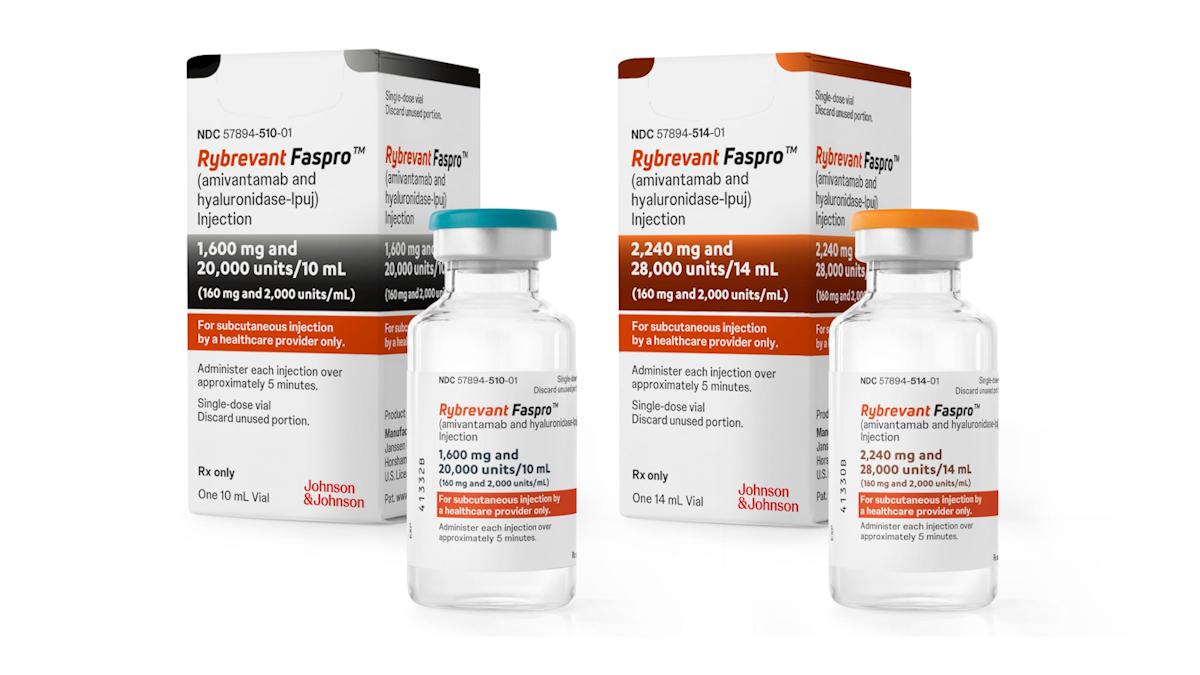J&J says Rybrevant combo has survival edge over Tagrisso

Johnson & Johnson's recently approved combination of Rybrevant and Lazcluze has improved overall survival compared to AstraZeneca's Tagrisso in a head-to-head trial, claiming what could be a key edge in the EGFR-mutated lung cancer market.
The new data comes from the MARIPOSA trial, which underpinned the FDA clearance of EGFRxMET bispecific antibody Rybrevant (amivantamab) with third-generation EGFR tyrosine kinase inhibitor Lazcluze (lazertinib) as a first-line therapy for locally advanced and metastatic non-small cell lung cancer (NSCLC) with EGFR exon 19 deletions or exon 21 L858R substitutions.
Rybrevant and Lazcluze also topped market-leading EGFR inhibitor Tagrisso (osimertinib) on progression-free survival (PFS) in the trial, and the new OS result will ramp up pressure on AZ's drug, which made $4.9 billion in sales in the first nine months of 2024 and is the company's second-biggest seller.
What will please J&J – and worry AZ – is the reported size of the OS benefit with Rybrevant/Lazcluze, with J&J suggesting that its combination extends median survival by more than a year. However, the full dataset isn't available yet, so oncologists will be eager to get a proper look at the results at a medical congress later this year.
In a statement, J&J said that, unlike PFS – which tracks the time a treatment keeps a patient's cancer from progressing – OS "helps patients understand the impact therapy could have on the ability to live longer from the start of treatment."
Tagrisso has been approved as a first-line monotherapy for this type of cancer since 2018 and earlier this year was also cleared by the FDA for use in combination with chemotherapy. A combination of Rybrevant and chemo also got the go-ahead in the US last September, based on results from the MARIPOSA-2 trial.
AZ's drug is firmly entrenched in the first-line setting, so J&J will need strong data to displace it – particularly as Rybrevant needs to be given as an infusion every two weeks after a lead-in period, while Tagrisso is given orally. The bispecific antibody has also been linked to clotting side effects, which could factor into treatment decisions.
Some analysts have suggested that the tipping point for Rybrevant take-up will come if and when a newer subcutaneous version of the drug – which outperformed the IV version in the PALOMA-3 trial and has a reduced risk of clotting – reaches the market.
That said, another year of life will no doubt be highly meaningful for patients, while cancer specialists will also be keen to drill down into patient subgroup data to help guide their treatment decisions.
"The combination of these two agents previously demonstrated an improvement in progression-free survival, but this does not always capture the impact on the entire treatment course," commented MARIPOSA investigator Stephen Liu, of Georgetown University School of Medicine.
"Evaluation of overall survival can better demonstrate the benefit of a first-line treatment regimen," he added.












